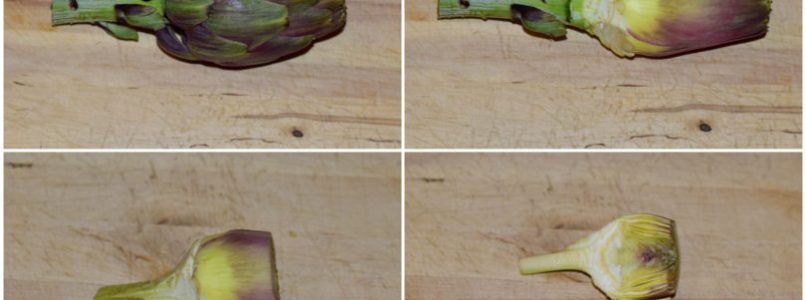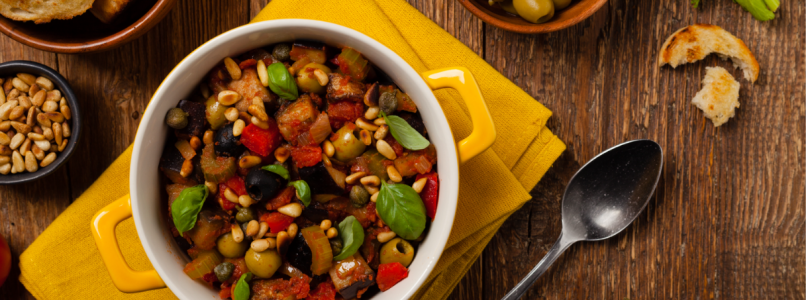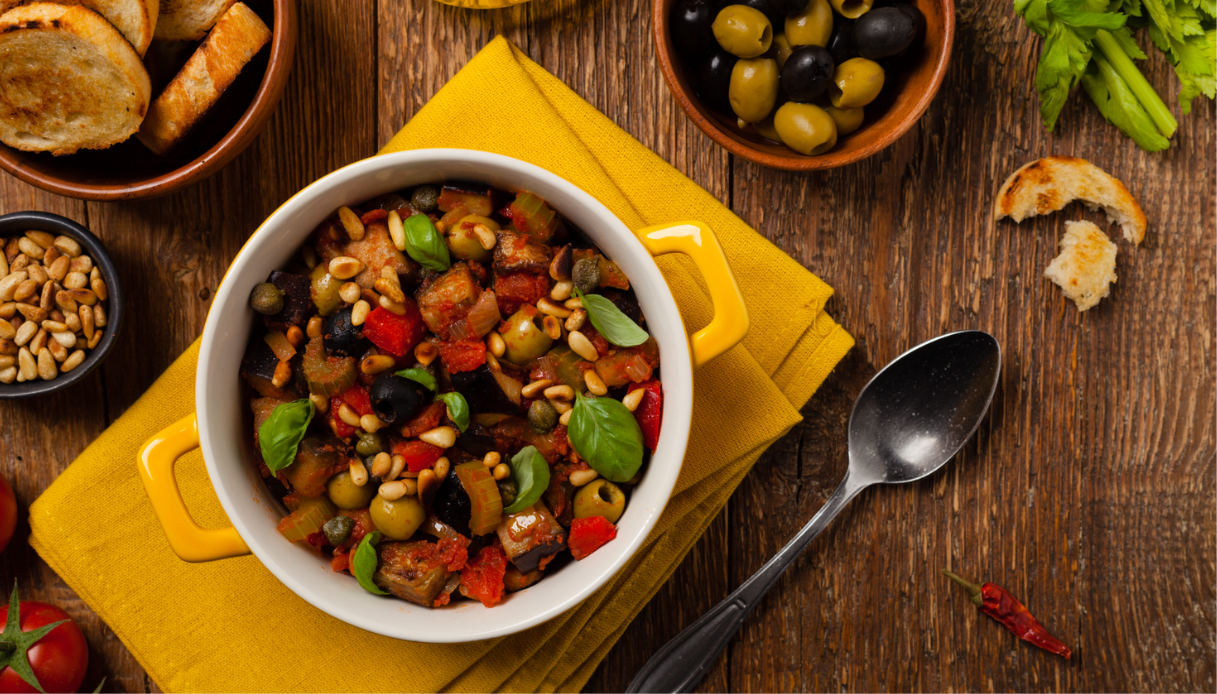First of all, clean the artichokes (I advise you to wear gloves, so as not to blacken your hands) removing stems, tips, external leaves and beards (here is the complete guide to do it best).
Cut them into slices and let them rest in water acidulated with lemon juice for 20 minutes, so that they do not oxidize.

Heat a little oil in a non-stick pan, add the well-drained artichokes and cook over medium-low heat with a lid for about 15 minutes or until they are tender, then add salt.
In the meantime, clean the celery, cut it in half lengthwise and then into slices, then cook it for 5 minutes in already boiling water and drain it.
Peel the onion and cut it into slices.
Sauté the onion over a low heat in a large non-stick pan with a little oil, then add the celery, olives and capers and leave to flavour.
Add the puree and 1 glass of water and continue cooking until the sauce has reduced.
(If you want, you can also make it plain: in that case increase the oil a little and add only the water, without the puree.)
Add sugar and vinegar and let mix, then add the artichokes and season with salt and pepper.
The artichoke caponata is ready, you can keep it in the fridge for up to 1 week and serve it hot, warm or cold.




